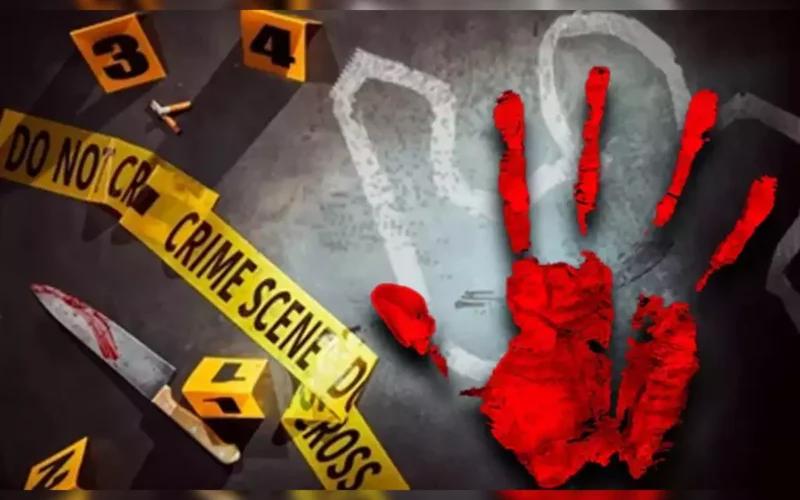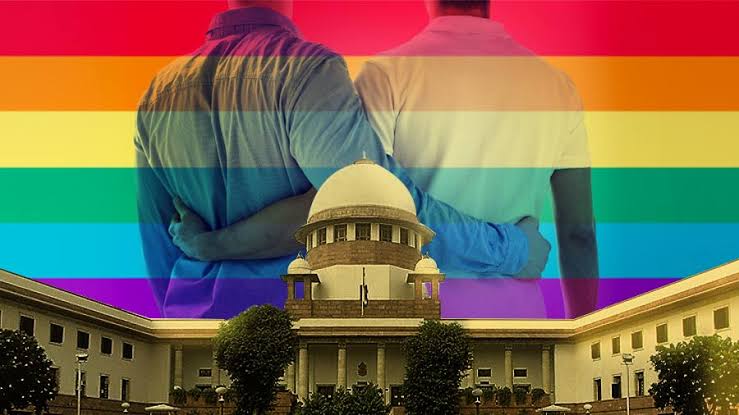Some historical events are eternally graved in our minds. Famous murder cases are listed here. Their brutality, mystery, and unsolved crimes still frighten us. Although unpleasant, these events maintain our attention because they have enduring impacts on society. We are still searching for solutions and the way they challenge our understanding of human nature.
Famous murder cases around the world:
Dennis Nelson
Nelson murdered six in the late 1970s and early 1980s. He picked up young men at London clubs, took them home, and choked them. He would wash and dress the corpses and store them for weeks or months. He spoke and had sex with them before burning or flushing them. His offence was that “the leftover parts of the human he had tried to flush away were stuck in a drain outside his home.”
Diane Downs
Diane Downs murdered her three children and drove them to the hospital in 1983. One daughter died on the way to the hospital, another suffered a stroke, and her son was paralyzed. A “strange man” attempted to take Diane’s vehicle and then shot everyone, she said. The cops uncovered her journal, which “described her obsession with a married man who did not want kids.” This led to her arrest. She received 50–life sentences.
The Boy in the Box
After 60 years, the Boy in the Box’s fate remains unknown. The story began on a frigid February 1957 road outside Philadelphia. While checking his traps, a teenage muskrat hunter uncovered a cardboard box in the woods. It included a raped, naked child.
Muskrat hunters hid their secrets. He was scared the cops would catch him for laying illegal traps if he informed anybody. The boy’s corpse sat in the woods for days before a bolder person discovered him.
The three-to-seven-year-old was mistreated. He seemed thin, malnourished, and filthy. His hair was chopped just before he died, and large portions adhered to him. Small scars covered his body, mainly on his foot, crotch, and chin.
The youngster left alone in the box received just one modest gesture of compassion. He was blanketed and left to decay by his killers. He had only gotten one love.
Police collected the boy’s fingerprints to locate a match. Nothing was found. Flyers were posted throughout the area inquiring for the unnamed youngster, but no one responded. They never claimed him as a kid.
Police did all they could to solve the crime. Everything from the cardboard box to his blanket was examined at the murder site. Everything they tried failed.
One of America’s most notorious murders remains unsolved after 60 years. Nobody knows who the youngster was or how he ended up nude and chopped up in a box in the woods. After all these years, “America’s Unknown Child.” may never be known.
St. Valentine’s Day Massacre
The worst of Chicago’s gang conflict. In late 1920s, seven guys died. People would always remember the St. Valentine’s Day Massacre as awful. Al “Scarface” Capone plotted this horrific mob massacre to eliminate George “Bugs” Moran and become the Chicago gang’s chief.
When four Capone men arrived on February 14, 1929, Moran broke the law by selling alcohol in his warehouse. Capone may have lured Moran to the premises by claiming he wanted assistance with a Canadian cocaine operation.
Five Moran men and two vehicle laborers heeded Capone’s request. They didn’t realize Capone’s men were waiting for them as they entered the building.
Albert Weinshank arrived last among Moran’s troops. After exiting his Cadillac automobile on the street, two police officers received him at the warehouse. To protect their boss, Moran’s guys lined themselves against the wall with their backs to the cops and didn’t speak.
They were halted by non-police. They were Capone’s guys.
After Moran’s men lined up against the wall, two additional Capone men with submachine guns and civilian clothing entered. Men were shot often. Six died immediately, but one was in excruciating agony for hours before dying in a hospital bed from his injuries.
The scheme targeted Bugs Moran, who was never located. Bugs Moran was rescued because the guys assumed Weinshank was Moran.
Despite being the most probable suspect, Capone avoided trouble. Nobody has been accused of the murders. Capone never claimed responsibility for the St. Valentine’s Day Massacre violence and deaths.
- Unsolved Mysteries: A Labyrinth of Unanswered Questions
- Examples:
The Hinterkaifeck Murders (Germany 1922): A farmhouse family was brutally murdered with farm equipment. Due to remoteness, lack of motive, and absence of forced access, investigators are still unsure what transpired 100 years later.
Jack the Ripper (London, England, late 1880s): Unsolved Whitechapel murders of women. These horrific deaths and the killer’s letters and lack of identity made the case even more prominent.
- Enduring creepiness: the weight of the unknown:
Our need for closure keeps us fascinated by unresolved mysteries. Dread and the possibility that justice may never be done due to unanswered questions. We imagine what will happen to the victim and the offender, who may still be accessible.
They may also inspire plots and speculation. Because there are no obvious solutions, people’s minds might run wild, making riddles scary.
- Brutal acts
- Example:
The green river killer: Gary Ridgway was the “Green River Killer.” in Washington State in the 1980s and 1990s. This serial murderer put numerous women’s corpses in the woods. It’s unfortunate since so many people were slain, and it was planned.
Keddie Cabin Murders (1981, US): Four people were slain in a remote home, and the single survivor had a fragmented recollection. Investigators and the public are nonetheless worried by the deaths’ brutal nature and lack of a clear cause.
The depth of human cruelty: Brutal deeds reveal the horror of human brutality. These atrocities are unpleasant and remind us that some individuals are nasty.
These incidents might also make you consider your social responsibility and safety nets for the vulnerable.
Cases that Shattered Trust: When the World Feels Unsafe
- Example:
The Disappearance of Madeleine McCann (Portugal, 2007): A young British girl disappeared from a holiday apartment, sparking a global search and media frenzy. The case shattered the kids’ false feeling of safety while on vacation, and the family still has questions.
The Golden State Killer (California, USA, 1970s-1980s): This serial murderer and rapist frightened California for almost 10 years until DNA technology caught him. Community members lost faith in the case, and the criminal’s activities have instilled terror.
Exploration: The Erosion of Security
We doubt our safety in these instances. When intimate friends of the victim are accused, we question who to believe. They demonstrate how weak certain groupings are and how easily manipulable they are.
These situations may also spark discussions about rebuilding trust and social assistance, particularly for vulnerable persons.
Additional topics
- How the media covers serious instances that might influence individuals in the long term. Responsible journalism informs and engages people, whereas sensationalized news frightens.
- Investigative science has given people hope that certain long-standing mysteries can be answered. DNA has solved cases that were supposed to be gone forever.
- Detective novels and terrifying movies may be based on scary crimes. Fantasy interpretations of genuine events may play on and explore people’s concerns.
Cultural impact and media representation
- Books, documentaries, and films inspired by chilling murder cases: True crime books, films, and movies have been popular in recent years. Real-life murder details intrigue. Truman Capote’s “In Cold Blood,” Errol Morris’ “The Thin Blue Line,” and Netflix’s “Making a Murderer” all been enjoyable to read and sparked discussions on morality, justice, and the human psyche. These tales often explore the darkest aspects of criminals and victims.
- Societal fascination with crime and murder: A warped curiosity in the darkest parts of human nature, a yearning for justice and closure, and a need to understand criminals have long drawn people to crime and murder. Famous cases are the subject of many true crime podcasts, TV series, and internet organizations, demonstrating their obsession. While gruesome, this curiosity indicates how much we desire to know about the human condition.
- The role of media in perpetuating public interest: People are interested in crime and murder because the media covers frightening incidents and makes compelling tales. Surprise stories in the news pique curiosity and spark discussion. Since social media makes it simpler to communicate information, amateur sleuths and “armchair detectives” may work on cases worldwide. The media may highlight social issues and promote justice, but it can also exaggerate calamities and profit from victims and their families. Because of this, news organizations covering crimes and killings must be sensitive and ethical.
Conclusion
There’s a reason why these memorable acts stick with us. They cut through the illusion of safety and show the worst sides of people. Some cases are solved, but others are still a secret. Each story makes us think about how complicated crime is and how long the effects of violence can last on individuals, their families, and society as a whole.
FAQS
- What are some examples of unsolved murder cases that have captured the public’s imagination?
We remember unsolved murders. See 1957’s The Boy in the Box. A youngster was found dead in a box outside Philadelphia. No one knows who or how killed him after years of study. Another prominent example is Jack the Ripper (1888). Whitechapel’s horrific murder of women has no suspect, and the offender has been sending menacing letters. The 1922 German Hinterkaifeck Murders heighten the suspense. A family was murdered on a remote farm without a reason, forced entry, or perpetrator.
- Why are we so fascinated by unsolved murders?
We like unsolved killings for many reasons. Humans are morbidly curious in evil and why people do bad things. After awful tragedies, you fear the victims may never get justice. They may also demonstrate fraudsters’ thoughts, helping us understand their actions.
- How does media coverage impact the enduring legacy of these cases?
Media coverage impacts how individuals remember these stories. Sensationalized news may scare people. However, proper reporting may inform and engage problem-solvers. DNA technology in forensics may resuscitate and solve old cases. These events influenced true crime books, videos, and films. Their fiction addresses real-life concerns.
- What are the societal implications of our fascination with true crime?
True crime stories intrigue us because we want to discover why people do bad things. Popular cases may provoke arguments on justice, morality, and the criminal justice system. Interested persons may learn about disadvantaged populations and social support needs. It’s wrong for the media to abuse victims’ suffering or glorify violence.
https://lawfullegal.in/workshop-on-ai-for-law-students-by-lawlevelup-online-certification-enrol-now/


